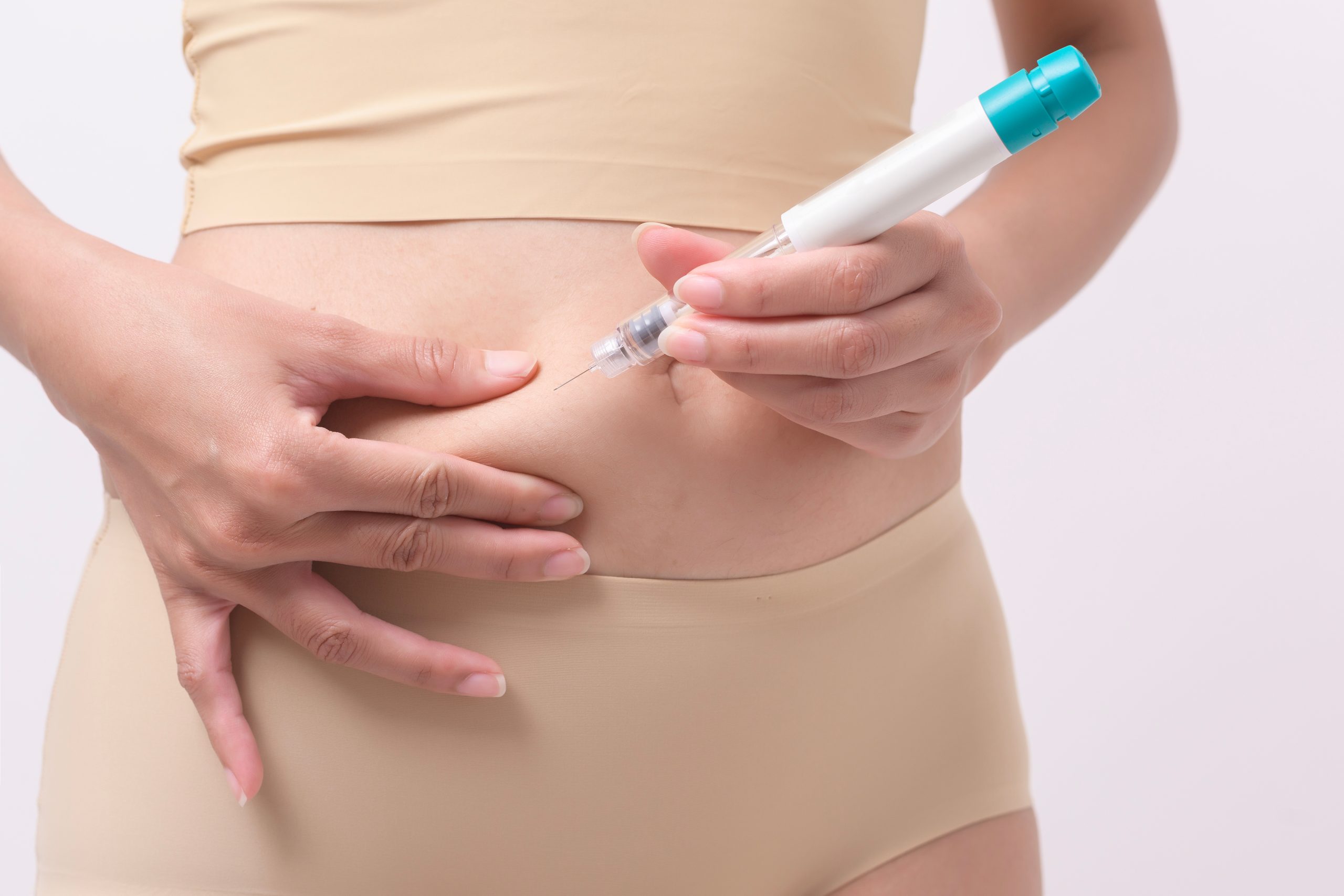IVF Needles: Everything You Need To Know

In vitro fertilization (IVF) involves various medications that are injected into fatty tissue beneath the surface of your skin. For those of you new to the procedure, all these injections can feel daunting. However, understanding the role of IVF needles, the types, lengths, and gauges used, and how to manage them, can ease your journey.
In this article, we’ll provide comprehensive information about IVF needles, from their purpose and types to practical tips for administration and coping with the experience.
Understanding IVF Needle Size
IVF treatments involve various injectable medications, most of which are delivered to the subcutaneous fat layer, while some need to be delivered to the muscle. Needle sizes are typically measured in gauge (G) and length.
Knowing the purpose and appropriate use of each needle size can help you prepare mentally and physically for the IVF process.
Needle Gauge
Refers to the needle’s diameter. A higher gauge means a thinner needle. Common gauges for IVF needles range from 18G (thicker) to 30G (thinner). With most being 27, 28, or 30 gauge.
Needle Length
Shorter needles are used for subcutaneous injections, which means into the fat beneath the skin. These are usually ½ to ⅝ inches long. Longer needles, 1 inch or longer, are used for intramuscular injections–deep into the muscle tissue.
IVF needles for Subcutaneous Injections (SC)
Needles for subcutaneous injections are usually 0.5 inches long and have a thin gauge of 27, 28, or 30 G.
IVF Needles for Intramuscular Injections (IM)
These needles are usually 1.5 inches long and slightly higher gauge; 21, 22, or 25 G.
Injectable IVF Medications, Needle Sizes, and Treatment Details
Gonadotropins (e.g., Follistim, Gonal-F, Menopur)
- Needle Size: 25G to 30G, ½-5/8 inch
- Injection Type: Subcutaneous
- Typical Length of Treatment: 8-14 days
- Number of Injections: 1-2 injections per day
GnRH Antagonists (e.g., Ganirelix, Cetrotide)
- Needle Size: 27G to 30G, ½ inch
- Injection Type: Subcutaneous
- Typical Length of Treatment: 5-7 days during the stimulation phase, usually beginning around day 6 of stimulation.
- Number of Injections: 1 injection per day
GnRH Agonists (e.g., Lupron)
- Needle Size: 25G to 30G, ½–5/8 inch
- Injection Type: Subcutaneous
- Typical Length of Treatment: 10-14 days before starting gonadotropins, then continued through the stimulation phase.
- This is for the agonist protocol only, which is rarely used. GnRH is most commonly used as a trigger shot for two days.
- Number of Injections: 1 injection per day
hCG (Human Chorionic Gonadotropin) (e.g., Pregnyl, Ovidrel)
- Needle Size for Pregnyl: 22G to 25G, 1½ inch (intramuscular) or 27G to 30G, ½–5/8 inch (subcutaneous)
- Needle Size for Ovidrel: Pre-filled syringe with a 27G to 30G, ½-inch needle (subcutaneous)
- Injection Type: Intramuscular or Subcutaneous
- Typical Length of Treatment: Single injection to trigger ovulation, usually around day 11 of the stimulation period.
- Number of Injections: 1 injection
Progesterone in Oil
- Needle Size: 18G to 22G for drawing the medication, 22G to 25G, 1½ inch for injecting
- Injection Type: Intramuscular
- Typical Length of Treatment: 2-8 weeks, depending on pregnancy test results
- Number of Injections: 1 injection per day
Estradiol Valerate (e.g., Delestrogen)
- Needle Size: 22G to 25G, 1½ inch
- Injection Type: Intramuscular
- Typical Length of Treatment: As prescribed, often continuing through the first trimester if pregnancy occurs. This medication is very rarely used at CNY Fertility.
- Number of Injections: Typically, one injection every few days, as prescribed by your doctor
Omnitrope (Human Growth Hormone)
- Needle Size: 27G to 30G, ½ inch
- Injection Type: Subcutaneous
- Typical Length of Treatment: Variable, often started at the beginning of the stimulation phase and continued until egg retrieval
- Number of Injections: 1 injection per day
How to Care for IVF Needle Bruises
Bruises and soreness at the injection site are common side effects of all of these injectable medications. Though mildly uncomfortable, they’re usually not a cause for concern. However, there are several ways to minimize discomfort and care for the bruises effectively:
- Apply a cold compress: To help reduce swelling and prevent bruising, put an ice pack or a cold compress on the injection site just after administering the injection. Keep it there for 10-15 minutes.
- Arnica gel or cream: This natural remedy can reduce bruising and inflammation.
- Rotate injection sites and avoid injecting the same spot repeatedly.
- Keep the area clean before and after injection to prevent infection.
- Warm compresses after 24 hours can improve blood flow and help the bruise heal faster.
- Over-the-counter pain relievers like acetaminophen. Avoid aspirin or ibuprofen, which can thin the blood and potentially worsen bruising.
Can you Take IVF Needles on a Plane?
Yes, you can usually take IVF needles on a plane. Most airlines and security agencies, including the TSA in the United States, allow passengers to carry unused needles and syringes in a carry-on when accompanied by injectable medication. Some airlines require that the medication have a professionally printed label.
To help avoid issues, there are a few steps you can take:
- Have a prescription from your doctor.
- Keep your needles and medications in their original packaging with prescription labels.
- When going through baggage screening, inform security that you have medical supplies.
IVF Needles: The Bottom Line
Navigating the complexities of IVF can be challenging, especially when it involves managing multiple injections with different needle sizes.
Whether you’re learning about subcutaneous and intramuscular injections, the specific medications involved, or even how to travel with your supplies, having this knowledge can make help you feel prepared and less anxious about the process.
Remember, each step in the IVF journey is designed to bring you closer to your goal. With the right information and support, you can confidently manage your treatment and focus on the hopeful outcome ahead.
As with any medication, be sure to follow the instructions of your healthcare provider.


